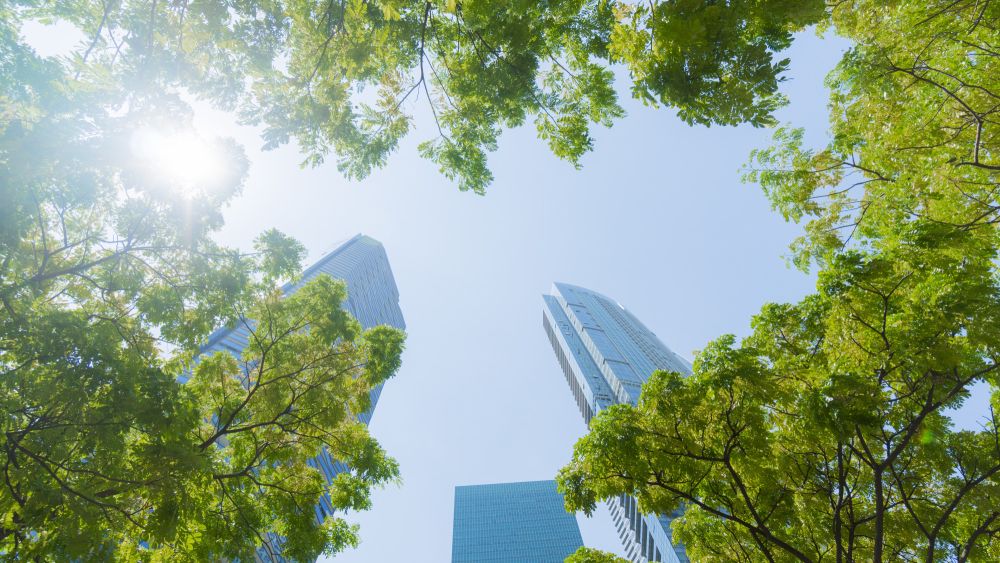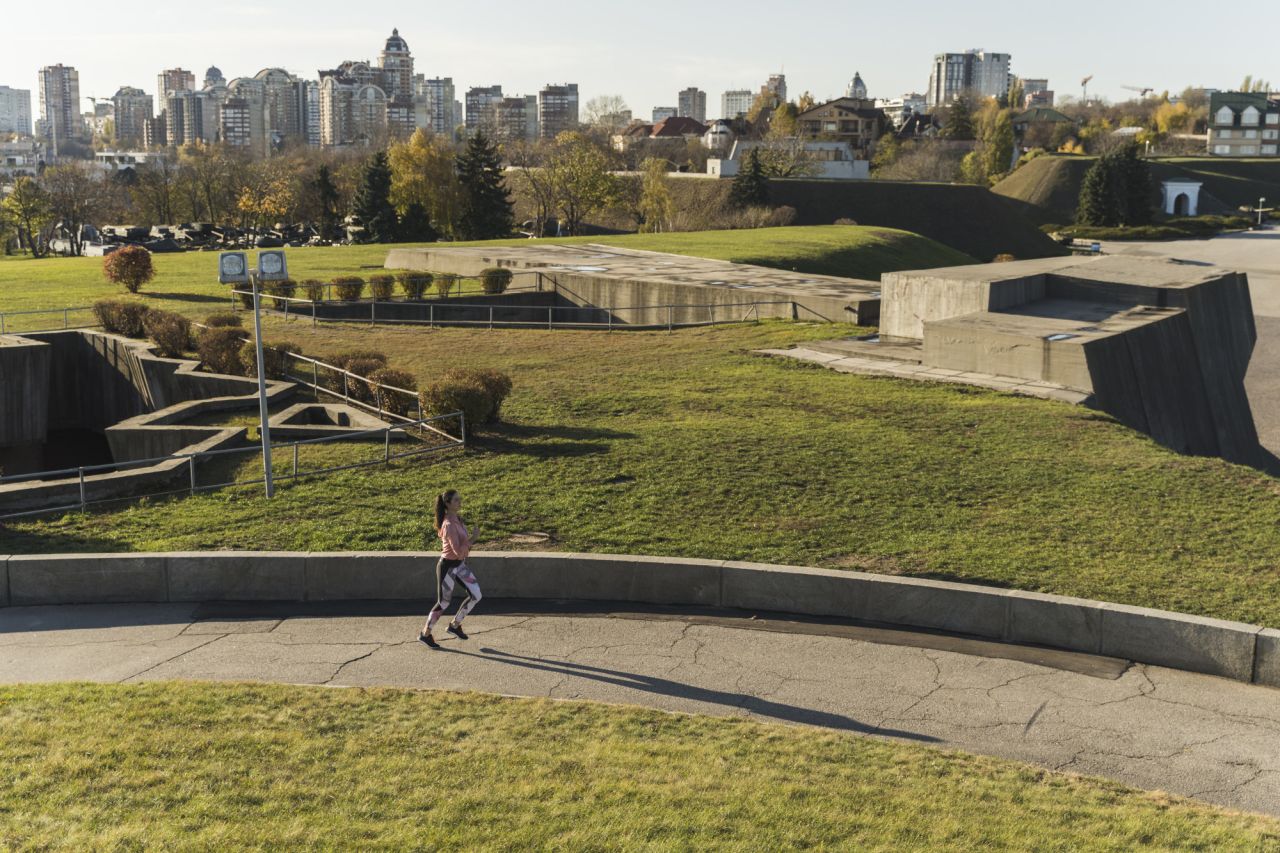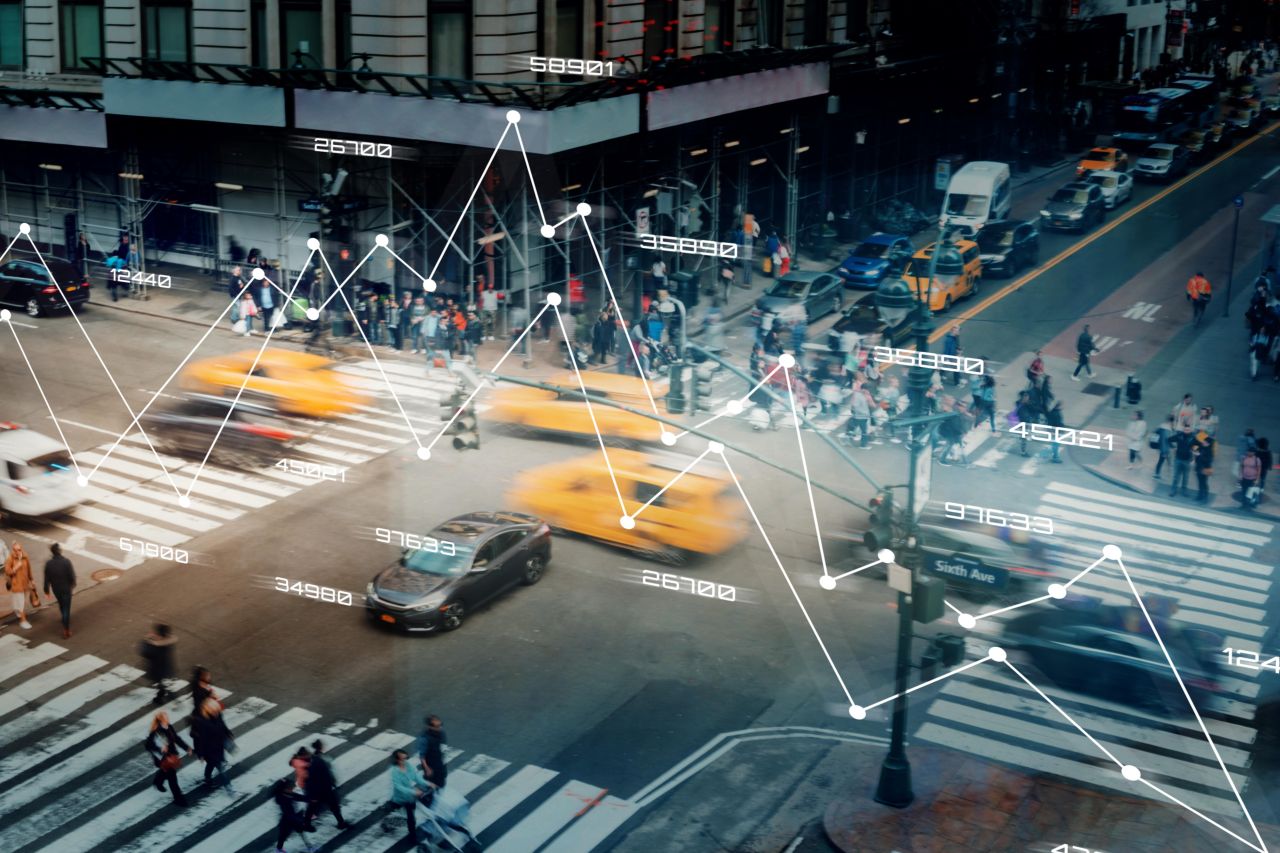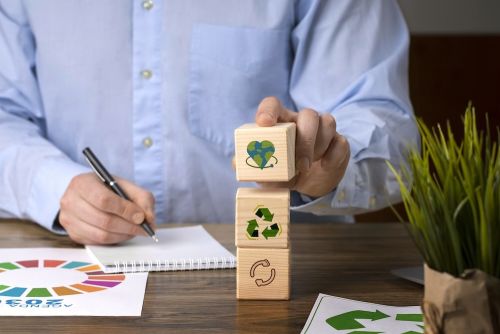From Grey to Green: Transforming Urban Infrastructure


Cut through the green tape
We don't push agendas. At Net Zero Compare, we cut through the hype and fear to deliver the straightforward facts you need for making informed decisions on green products and services. Whether motivated by compliance, customer demands, or a real passion for the environment, you’re welcome here. We provide reliable information—why you seek it is not our concern.
Urban Greening: Mitigating the Urban Heat Island Effect and Enhancing Climate Resilience
Urbanization has led to the development of dense, concrete-heavy landscapes that significantly contribute to the urban heat island (UHI) effect, where cities become noticeably warmer than surrounding rural areas. This phenomenon exacerbates the impacts of climate change, making cities hotter, more energy-dependent, and less hospitable. However, urban greening—through the strategic planting of trees, creation of green roofs, and establishment of urban gardens—offers a promising solution to mitigate these effects and enhance the overall resilience of cities.
Planting Trees: Natural Coolers and Carbon Sinks
Trees play a critical role in combating the UHI effect. Their canopies provide shade, reducing surface temperatures by blocking solar radiation. The process of evapotranspiration, where trees release moisture into the air, further cools the surrounding environment. Studies have shown that shaded areas can be up to 20-45°F (10-25°С) cooler than unshaded ones, significantly reducing the need for air conditioning in adjacent buildings.
Moreover, trees are vital carbon sinks, absorbing carbon dioxide (CO2) from the atmosphere and storing it in their biomass. An average mature tree can absorb approximately 48 pounds of CO2 annually, making urban forests a crucial component in reducing overall greenhouse gas emissions. Beyond cooling and carbon absorption, trees also improve air quality, reduce stormwater runoff, and provide habitats for urban wildlife, contributing to the ecological health of cities.
Green Roofs: Insulating Cities and Reducing Energy Demand
Green roofs, which involve the installation of vegetation atop buildings, offer multiple benefits in urban environments. By covering roofs with soil and plants, green roofs act as insulators, reducing the amount of heat absorbed by buildings. This leads to lower indoor temperatures and decreased reliance on air conditioning, which not only cuts down on energy consumption but also reduces peak electricity demand during hot weather.
In addition to their cooling effects, green roofs absorb rainwater, reducing the burden on urban drainage systems and mitigating the risk of flooding—a growing concern as climate change increases the frequency and intensity of extreme weather events. Green roofs also sequester carbon, though on a smaller scale compared to trees, and contribute to urban biodiversity by providing habitats for insects, birds, and other species.
Urban Gardens: Enhancing Resilience and Food Security
Urban gardens, whether community-based or integrated into residential and commercial spaces, serve as green oases that mitigate the UHI effect. Like green roofs, gardens cool the surrounding environment through evapotranspiration and shade. They also absorb CO2 and other pollutants, contributing to cleaner air in densely populated areas.
Beyond their environmental benefits, urban gardens play a significant role in enhancing community resilience. They provide local food sources, reducing the dependency on long supply chains that are vulnerable to disruptions. During extreme weather events or other crises, urban gardens can improve food security and offer a reliable source of fresh produce, which is especially important in low-income neighbourhoods with limited access to grocery stores.
Integrating Urban Greening into City Planning
To maximize the benefits of urban greening, cities need to integrate these initiatives into their broader planning and development strategies. This involves creating policies that encourage the planting of trees, the installation of green roofs, and the establishment of urban gardens. Incentives such as tax breaks, grants, or subsidies can encourage property owners and developers to invest in green infrastructure.
Additionally, urban greening must be tailored to the specific climate, geography, and needs of each city. For example, in arid regions, drought-resistant plants and trees should be prioritized to ensure sustainability. Collaborative efforts between governments, businesses, and communities are essential to ensure that urban greening projects are successful and beneficial for all.

The Economic and Social Benefits of Urban Greening
1. Boosting Property Values
One of the most tangible economic benefits of urban greening is the increase in property values. Numerous studies have shown that properties located near green spaces, such as parks, gardens, or tree-lined streets, tend to be more desirable and command higher prices compared to those in less green areas.
Aesthetic Appeal: Green spaces enhance the visual appeal of neighbourhoods, making them more attractive to potential buyers and investors. The presence of mature trees and well-maintained parks can significantly uplift the aesthetic quality of urban areas, which directly translates into higher property values.
Reduced Energy Costs: Trees and green roofs provide natural cooling, reducing the need for air conditioning during hot months. This energy efficiency is a selling point for property buyers and can lead to lower utility bills, further increasing the attractiveness of green properties.
Investment Attraction: Areas with abundant green spaces are often seen as more livable and sustainable, attracting businesses and developers. This influx of investment can stimulate local economies, leading to job creation and increased economic activity.
2. Enhancing Public Health
Urban greening contributes to public health in multiple ways, from improving air quality to encouraging physical activity. These health benefits have both direct and indirect economic impacts, reducing healthcare costs and increasing productivity.
Improved Air Quality: Trees and plants act as natural air filters, absorbing pollutants and producing oxygen. Cleaner air reduces the incidence of respiratory and cardiovascular diseases, which are common in polluted urban environments. This decrease in health issues can lead to lower healthcare costs for individuals and governments.
Encouraging Physical Activity: Accessible green spaces encourage outdoor activities like walking, jogging, and cycling. Regular physical activity is associated with lower rates of obesity, diabetes, and heart disease, which reduces healthcare costs and absenteeism from work. Moreover, active residents are generally happier and more productive, contributing positively to the local economy.
Mental Health Benefits: Exposure to green spaces has been shown to reduce stress, anxiety, and depression. This is particularly important in urban areas where residents may experience higher levels of stress due to noise, crowding, and fast-paced lifestyles. Improved mental health not only enhances the quality of life but also boosts productivity and reduces the economic burden associated with mental health treatments.
3. Fostering Social Cohesion
Urban greening plays a crucial role in building stronger, more cohesive communities. Green spaces act as social hubs where residents can gather, interact, and build relationships, which has far-reaching social and economic implications.
Community Interaction: Parks, community gardens, and green corridors provide venues for social activities, festivals, and community events. These spaces encourage interaction among diverse groups, fostering a sense of belonging and community pride. Stronger social networks can lead to a more resilient community, better able to support its members during times of crisis.
Crime Reduction: Research suggests that well-maintained green spaces can lead to a reduction in crime. Green areas enhance surveillance, increase foot traffic, and promote social interaction, all of which can deter criminal activity. Lower crime rates improve the safety and appeal of neighbourhoods, which in turn boosts property values and attracts more residents and businesses.
Inclusive Spaces: Urban greening projects that involve community participation can empower residents, giving them a sense of ownership over their local environment. This inclusion fosters social equity, ensuring that all community members, regardless of socioeconomic status, have access to the benefits of green spaces.
4. Economic Revitalization and Sustainability
Urban greening can stimulate economic revitalization, particularly in areas that have experienced economic decline. By transforming neglected or underutilized urban areas into vibrant green spaces, cities can attract new businesses, tourism, and investment.
Tourism and Recreation: Iconic green spaces and urban parks often become tourist attractions, bringing in revenue from visitors. For example, New York City's Central Park attracts millions of tourists each year, contributing significantly to the city's economy.
Job Creation: Urban greening projects create jobs in landscaping, horticulture, and maintenance. Additionally, the increased attractiveness of green areas can lead to growth in sectors like retail, hospitality, and real estate.
Long-term Sustainability: Investing in urban greening is an investment in a city’s long-term sustainability. Green infrastructure, such as green roofs and rain gardens, helps manage stormwater, reduce flooding, and mitigate the effects of climate change. This reduces the need for costly grey infrastructure and provides long-term economic savings for cities.
Case studies
Urban greening initiatives are transforming cities worldwide, bringing environmental, social, and economic benefits to urban residents. Below are examples of specific cities and neighbourhoods that have successfully implemented urban greening projects, demonstrating the potential of these initiatives to create healthier, more sustainable urban environments.

Singapore: The Garden City
Singapore has earned the nickname "The Garden City" due to its comprehensive and innovative urban greening policies. The city-state has integrated green spaces into its urban planning for decades, with initiatives like the Park Connector Network, a system of green corridors that link major parks and nature reserves. Singapore is also known for its "Supertrees" in Gardens by the Bay, vertical gardens that tower up to 50 meters high, and its widespread adoption of green roofs and vertical gardens on buildings.
New York City, USA: The High Line
The High Line is a 1.45-mile-long elevated linear park built on a former railroad track on Manhattan's West Side. This unique urban green space was developed through a community-led effort and has become a model for urban renewal projects worldwide.
Milan, Italy: Bosco Verticale (Vertical Forest)
The Bosco Verticale, or Vertical Forest, is a pair of residential towers in Milan that incorporate over 900 trees, 5,000 shrubs, and 11,000 perennials on their balconies. This innovative approach to urban greening integrates vegetation directly into the architecture, creating a living, breathing ecosystem within a high-rise building.
Melbourne, Australia: Urban Forest Strategy
Melbourne's Urban Forest Strategy aims to increase the city's tree canopy cover from 22% to 40% by 2040. The city has been planting thousands of trees each year, focusing on areas with low canopy coverage and high vulnerability to heat waves.
Medellín, Colombia: Green Corridors Project
Medellín, once infamous for its violent past, has transformed itself into a model of urban innovation. The Green Corridors Project is a key part of this transformation, involving the planting of trees, shrubs, and flowers along 30 corridors that connect parks, schools, and neighbourhoods throughout the city.
Urban Greening in the Age of Smart Cities
As urbanization continues to accelerate, cities are becoming more densely populated, presenting challenges that necessitate innovative solutions. The integration of smart city technologies with urban greening initiatives offers a promising path forward, enhancing the effectiveness, efficiency, and sustainability of green spaces while contributing to the overall health and resilience of urban areas. Smart cities leverage digital technologies, data analytics, and the Internet of Things (IoT) to improve living conditions, and when applied to urban greening, these technologies can significantly amplify the benefits of green spaces.
One of the key challenges in urban greening is maintaining the health and vitality of urban trees, which are crucial for cooling cities, improving air quality, and enhancing biodiversity. IoT devices offer innovative solutions for monitoring and managing urban forests. Sensors installed on or near trees can monitor various environmental conditions such as soil moisture, temperature, light levels, and air quality. These sensors provide real-time data, helping urban planners and arborists detect early signs of stress or disease in trees, allowing for timely interventions. By analyzing data from these IoT sensors, cities can predict when trees need watering, pruning, or other maintenance, optimizing resource use and reducing costs associated with tree care. The data collected from IoT devices can also be integrated into smart city dashboards, giving city planners and environmental managers a comprehensive view of the urban forest and enabling more informed decision-making regarding tree planting, species selection, and resource allocation.
Water management is another critical component of urban greening, particularly in regions prone to drought or where water resources are limited. Smart irrigation systems, powered by IoT and data analytics, can greatly enhance the efficiency of water use in urban gardens and green spaces. Smart irrigation controllers use data from weather forecasts, soil moisture sensors, and evapotranspiration rates to automatically adjust watering schedules. This ensures that plants receive the right amount of water at the right time, reducing water waste and promoting healthier plant growth. Additionally, urban garden managers can monitor and control irrigation systems remotely through smartphone apps or centralized dashboards, allowing for quick adjustments in response to changing weather conditions. By optimizing irrigation schedules and using precise amounts of water, smart irrigation systems contribute to significant water savings, which is particularly important in cities facing water scarcity.

Smart cities are characterized by their use of data and technology to optimize urban infrastructure and services. Integrating green infrastructure, such as parks, green roofs, and urban gardens, with smart city planning can enhance the sustainability and livability of urban areas. Geographic Information Systems (GIS) and other mapping technologies allow city planners to identify the best locations for green spaces based on factors like population density, heat island intensity, and existing vegetation, ensuring that green infrastructure is strategically placed to maximize environmental and social benefits. Smart cities can also use real-time data to dynamically adapt urban planning processes. For example, if a new green space is established, planners can monitor its impact on local air quality, temperature, and biodiversity in real time, adjusting plans as needed to optimize outcomes. Furthermore, green infrastructure can be integrated with smart energy grids to enhance sustainability, such as installing solar panels on green roofs to generate renewable energy while also providing insulation and reducing the heat island effect.
Smart city technologies also have the potential to enhance citizen engagement in urban greening efforts, making it easier for residents to participate in the maintenance and enjoyment of green spaces. Cities can develop mobile apps that allow residents to report issues in green spaces, such as fallen trees or damaged park equipment, directly to city authorities. These platforms can also provide information on local green spaces, such as opening hours, events, and volunteer opportunities. Some cities use gamification to encourage residents to participate in urban greening activities, offering points or rewards for planting trees, participating in community gardening, or reducing water usage. This approach fosters a sense of community ownership and responsibility for green spaces. Additionally, smart city platforms can engage residents in citizen science projects, where they contribute to monitoring urban biodiversity, tree health, and environmental conditions, raising awareness and education about the importance of urban greening.
While smart city technologies offer significant benefits for urban greening, some challenges need to be addressed, particularly related to equity and access. The digital divide means that not all residents may have access to the tools needed to participate in smart city initiatives, so addressing this divide and providing access to technology for all community members is crucial. Furthermore, the collection and use of data in smart city initiatives raise concerns about privacy and security, requiring robust data governance frameworks to protect residents' privacy while still benefiting from the insights provided by data analytics. Implementing smart technologies can also be costly, and not all cities may have the resources to do so at scale. Partnerships between governments, private sector companies, and communities can help share costs and expand the reach of smart urban greening initiatives.

More related content

Extended Producer Responsibility (EPR) for Packaging: Country-by-Co...

What Is Scope 3? Understanding Indirect Emissions and Their Regulat...

The EU's Omnibus Proposal: A Deep Dive
